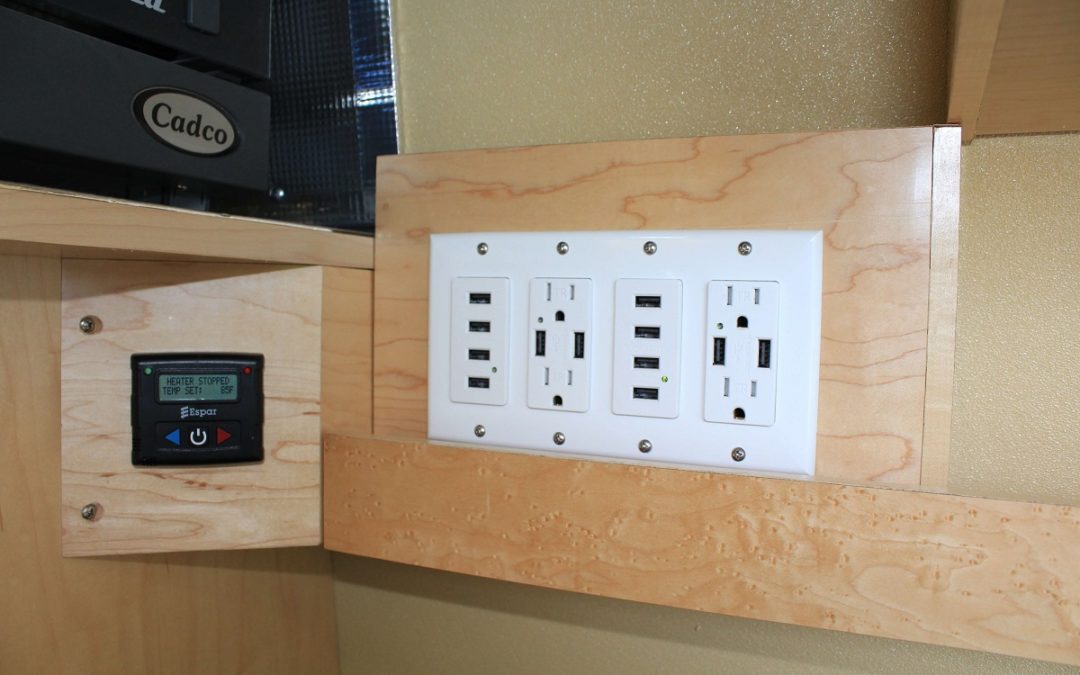How to Choose a Power Inverter
There are a lot of options out there for power inverters. There are 12V inverters, 24V inverters, Pure sine inverters, modified sine inverters, and an array of different sizes and power ratings. We want to help you choose the right inverter for your needs, and show you the inverter we use in our builds.
Inverter Voltage
First, you will have to make sure your inverter voltage matches your battery bank. That means if your batteries are connected so that they are 12V, you will need a 12V inverter.
Inverter Wattage
What do you plan on powering? Do you want to run an electric kettle? An electric cook top? Power tools? If so, then a 2000 watt inverter will work. 2000 watts is as high as you want to go on a 12V battery bank, otherwise you can pull too much power and generate too much resistance in the wires and connections.
If you don’t plan on running heavy power consumers, a smaller inverter is a good way to go. A 1200 watt inverter will still run most small appliances and even some microwaves.
Why?
The reason some may want to go for a smaller inverter is that when an inverter is turned on, it has a constant, no load, power draw. Each manufacturer should list in their product description how much power the inverter uses at a constant. For example, a 1200 watt inverter uses 1.2 amps/ hour, while the same company’s 2000 watt inverter uses 1.7 amps/hour. 1.2ah x 24h = 29 amps/ day. 1.7ah x 24h = 40.8 amps/ day. As you can see, a larger inverter will use a bit more power each day.
Modified Sine vs Pure Sine
A pure sine inverter will act like a standard 60hz home grid power system. Pure sine means that the rise and fall of the AC current is smooth, creating a pure sine wave. A modified sine inverter has a more direct up and down change of the frequency and therefore has trouble running some appliances.
Normally, if a power inverter is modified sine it will not be listed with that term in the description. If you do not see “PURE SINE” on an inverter’s description you can assume that it is modified. A modified sine inverter will run most electronics. It’s only when operating sensitive electronics such as a cook top that you will run into issues.
The best option for power, if you have solar, is to go with a 2000 watt pure sine wave inverter. This will give you the power to run almost anything. We like to use the 2000watt pure sine Renogy inverter in our builds. It is easy to use and runs all electronics smoothly. We’ve tried several different brands and this has been hands down the best product we’ve come across. It will run high demand power tools, including a table saw, with ease.
It is important to remember that when using power from an inverter, you should not exceed its power rating. A Vitamix blender pulls about 1700 watts. A toaster pulls about 1400 watts. Running these appliances together will reach over 3000 watts together and cause the inverter to shut itself down.
Happy travels!
Freedom Vans


So, how long can you run your laptop or a blender with your new power inverter?
Hi Julissa,
A 2000 watt inverter will allow you to run both at the same time. How long depends on how much battery storage you have.
A 90 watt laptop charger will use approximately 7.5 amp hours per hour plugged in. A Vitamix blender is about 1400 watts, and therefore uses about 117 amp hours per hour when turned on. You would probably only run it for a minute or so, and it uses about 2 amp hours per minute. If you have 100 amp hour AGM batteries, you can run the batteries down to 50% of capacity (technically lower, but we suggest 50% to preserve it’s lifespan), and therefore have 50 amp hours to use before needing to charge again.
With this amount of storage, you can use the laptop for 6 hours and the blender for 2 minutes before needing to recharge.
I hope this helps! Check out our blog post, “Beginner’s Guide: How to Operate Your Solar Power System”, for more information on the difference between watts and amp hours.
For smaller voltage, under 300 watts, you can get a cigarette lighter inverter, but above that you will need an inverter that will connect directly to your battery.